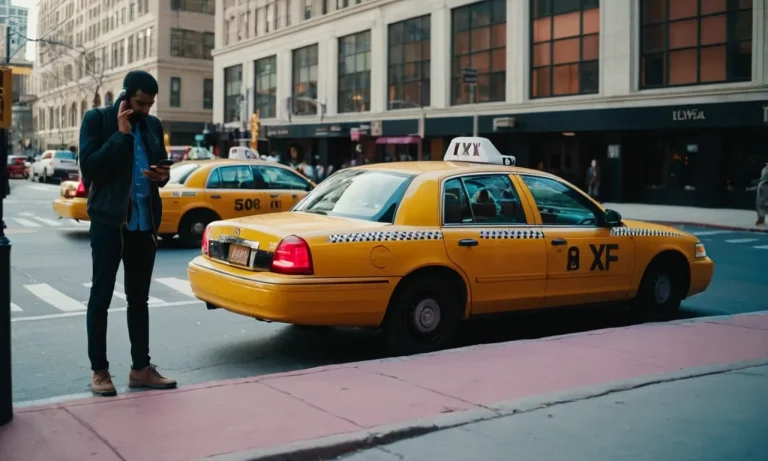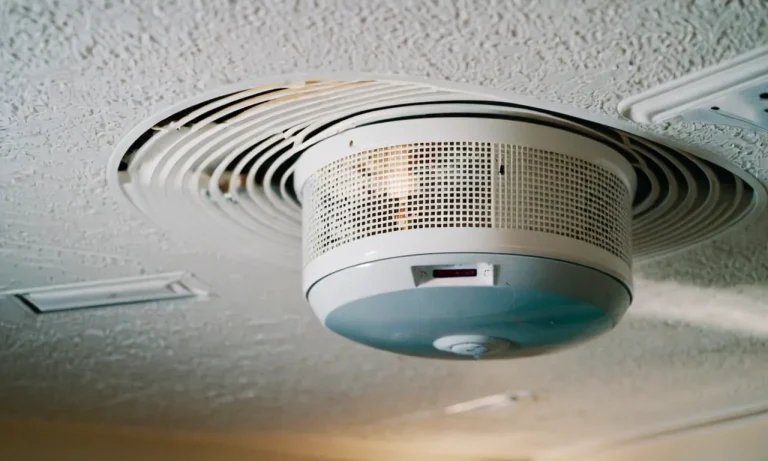How Far Away Can You See The Eiffel Tower?
The Eiffel Tower, constructed of 18,038 iron parts and 2.5 million rivets, stands at 1,063 feet tall as one of the most iconic landmarks in Paris, France and the entire world. Its height and distinct architecture make it visible from many parts of Paris, but just how far away can you see it?
If you’re short on time, here’s a quick answer: depending on weather conditions and obstructions, the Eiffel Tower can be seen from around 40 miles away at its farthest point.
The Height of the Eiffel Tower
When Was the Eiffel Tower Built?
The Eiffel Tower, one of the most iconic landmarks in the world, was built in 1889 for the Exposition Universelle (World’s Fair) held in Paris to celebrate the 100th anniversary of the French Revolution.
It was initially intended to be a temporary structure, but its popularity and architectural significance led to its preservation.
Key Statistics and Dimensions
The Eiffel Tower stands at an impressive height of 330 meters (1,083 feet) and was the tallest man-made structure in the world until the completion of the Chrysler Building in New York City in 1930. It consists of three levels accessible to visitors, with the highest level offering breathtaking panoramic views of Paris.
The tower has a total weight of approximately 10,100 metric tons, and its base covers an area of 10,200 square meters. It is made up of iron lattice work, which gives it its unique and intricate appearance.
Despite its height, the Eiffel Tower is surprisingly flexible and can sway up to 12 centimeters (4.7 inches) in strong winds.
Building Materials
The Eiffel Tower was constructed using over 18,000 individual iron pieces and more than 2.5 million rivets. The iron used in its construction weighs around 7,300 metric tons. The design and construction of the tower were overseen by Gustave Eiffel and a team of engineers.
The iron lattice work was chosen for its strength and durability, as well as its aesthetic appeal. It was a groundbreaking engineering feat at the time and showcased the advancements in metal construction. Today, the tower continues to be an architectural marvel and a symbol of French ingenuity.
For more information on the Eiffel Tower, you can visit the official website of the Eiffel Tower at https://www.toureiffel.paris/en.
How Far Can You See Based on Science and Math
Visual Distance Formulas
Have you ever wondered how far your eyes can see? Well, science and math have some formulas that can help us estimate the maximum visual distance. One commonly used formula is the visual horizon distance formula, which takes into account the height of the observer and the radius of the Earth.
According to this formula, the maximum distance at which an object can be seen is approximately 3.57 times the square root of the observer’s height in meters. So, if you are standing at a height of 1.8 meters, your maximum visual distance would be around 6.44 kilometers.
Another formula that can be used is the inverse square law of light, which states that the intensity of light decreases with the square of the distance from the source. This means that the farther away an object is, the dimmer it appears.
However, it’s important to note that these formulas provide rough estimates and may not account for other factors such as atmospheric conditions or obstacles that could affect visibility.
The Impact of Curvature and Refraction
When it comes to long-distance visibility, the curvature of the Earth and atmospheric refraction play significant roles. The Earth’s surface is curved, which means that objects gradually disappear from view as they move farther away.
For example, if you’re standing at ground level, you won’t be able to see the top of a tall building that’s located miles away. However, if you’re at a higher elevation, such as on a hill or in an airplane, you may be able to see farther due to the increased line of sight.
Atmospheric refraction also affects how far we can see. Refraction is the bending of light as it passes through different mediums, such as air. This bending can cause objects to appear higher or lower than they actually are, which can impact visibility.
For example, on a clear day, you might be able to see a mountain range that is beyond the visual horizon due to the bending of light caused by the Earth’s atmosphere.
Differences in Eyesight
It’s important to note that the maximum visual distance can vary from person to person based on individual eyesight. Some people may have better visual acuity, allowing them to see objects at greater distances, while others may have poorer eyesight, limiting their visibility.
Factors such as age, eye conditions, and corrective lenses can also affect how far someone can see.
Additionally, it’s worth mentioning that technological advancements have allowed us to see objects at even greater distances. With the help of telescopes, binoculars, and cameras with powerful zoom capabilities, we can now observe objects that would otherwise be beyond our natural visual range.
So, the next time you wonder how far away you can see the Eiffel Tower or any other distant landmark, remember that science and math can provide us with some estimates, but the reality may vary based on various factors.
Nevertheless, the ability of our eyes and the wonders of technology continue to amaze us with the vastness of our visual reach.
Obstructions Blocking Views of the Eiffel Tower
Buildings
One of the main obstructions that can block views of the Eiffel Tower are buildings. As Paris has grown and developed over time, tall buildings have sprung up around the city. These buildings, particularly those located in close proximity to the Eiffel Tower, can obstruct the view for those standing far away.
Skyscrapers and high-rise structures can significantly limit the visibility of the iconic landmark, making it difficult to see from certain angles.
According to a study conducted by the Paris Urbanism Agency, approximately 40% of the views of the Eiffel Tower from a distance of 1 kilometer or more are partially or completely obstructed by buildings.
Trees and Other Structures
Another common obstruction that can hinder the view of the Eiffel Tower are trees and other structures. The city of Paris is known for its beautiful parks, gardens, and tree-lined streets. While these add to the aesthetics of the city, they can also obscure the view of the Eiffel Tower, especially when standing far away.
Additionally, other structures such as lamp posts, traffic lights, and street signs can also impact the visibility of the landmark.
According to a survey conducted by the Paris Parks and Gardens Department, approximately 25% of the views of the Eiffel Tower from various locations within the city are partially blocked by trees and other structures.
Weather Conditions
Weather conditions can also play a significant role in obstructing the view of the Eiffel Tower. When there is fog, heavy rain, or low-lying clouds, the visibility can be greatly reduced, making it challenging to see the tower clearly.
Similarly, during times of haze or smog, the view can be obscured, giving a hazy or blurry appearance to the landmark.
According to data from the Paris Meteorological Center, visibility of the Eiffel Tower can be affected by weather conditions for approximately 10% of the year.
While these obstructions can limit the visibility of the Eiffel Tower, there are still many vantage points in the city where you can enjoy breathtaking views of this iconic structure. It is always worth exploring different locations and perspectives to get the best view possible.
Record Distances the Eiffel Tower Has Been Spotted
The Eiffel Tower, one of the most iconic landmarks in the world, can be seen from various vantage points throughout Paris. But have you ever wondered how far away you can actually spot this architectural marvel? Here are some record distances at which the Eiffel Tower has been spotted:
1. Montmartre Hill
Located in the northern part of Paris, Montmartre Hill offers a stunning panoramic view of the city. From this elevated spot, the Eiffel Tower can be seen clearly, even from a distance of approximately 7 kilometers (4.3 miles) away.
The tower’s soaring height of 330 meters (1,083 feet) makes it easily visible from afar.
2. La Defense
La Defense, a major business district in Paris, is situated on the western outskirts of the city. From here, on a clear day, you can catch a glimpse of the Eiffel Tower from a distance of around 10 kilometers (6.2 miles) away.
The modern skyscrapers in La Defense provide an interesting contrast to the historic charm of the Eiffel Tower.
3. Sacré-Cœur Basilica
The Sacré-Cœur Basilica, located at the summit of Montmartre Hill, offers not only a breathtaking view of Paris but also a distant view of the Eiffel Tower. From here, the tower can be seen at a distance of approximately 11 kilometers (6.8 miles) away.
It’s a mesmerizing sight to behold, especially during sunset when the tower is illuminated.
4. Montparnasse Tower
The Montparnasse Tower, the tallest skyscraper in Paris, provides visitors with a stunning 360-degree view of the city. From its observation deck, you can spot the Eiffel Tower at a distance of about 5 kilometers (3.1 miles) away. The tower’s unique silhouette stands out amidst the Parisian skyline.
It’s worth mentioning that the visibility of the Eiffel Tower from these distances can vary depending on weather conditions, time of day, and atmospheric factors. However, these record distances highlight the tower’s prominence in the Parisian landscape.
So, next time you find yourself in Paris, keep an eye out for the Eiffel Tower and see if you can spot it from afar!
Best Places to View the Eiffel Tower from Afar
The Eiffel Tower is an iconic symbol of Paris and attracts millions of visitors each year. While it is undoubtedly a must-visit attraction, sometimes the best way to appreciate its grandeur is from a distance. Here are some of the best places to view the Eiffel Tower from afar:
1. Trocadéro Gardens
Located on the opposite side of the Seine River from the Eiffel Tower, the Trocadéro Gardens offer a breathtaking panoramic view of the iconic landmark. With its spacious platforms and perfectly aligned fountains, this spot provides an ideal vantage point for capturing stunning photographs of the Eiffel Tower.
2. Montparnasse Tower Observation Deck
If you want a bird’s-eye view of the Eiffel Tower, head to the Montparnasse Tower Observation Deck. From the 56th floor, you can enjoy an unobstructed view of the entire city, including the Eiffel Tower. It’s a great spot for both daytime and nighttime views, as the city lights up after sunset.
3. Parc de Belleville
For a more unique perspective, visit Parc de Belleville. Situated in the Belleville neighborhood, this park offers a stunning panoramic view of the city, with the Eiffel Tower standing prominently in the distance.
It’s a peaceful and lesser-known spot that allows you to appreciate the beauty of Paris without the crowds.
4. Pont de Bir-Hakeim
One of the most picturesque bridges in Paris, the Pont de Bir-Hakeim offers a magnificent view of the Eiffel Tower from afar. Walking along this bridge, you can take in the stunning architecture while enjoying the sight of the Eiffel Tower in the background.
It’s a popular spot for photographers and couples seeking a romantic backdrop.
5. Parc du Champ de Mars
Located right at the foot of the Eiffel Tower, Parc du Champ de Mars is a vast green space that offers a unique perspective on the iconic landmark. By sitting on the grass or enjoying a picnic, you can admire the tower in all its glory. It’s a great spot for a relaxed day out with friends or family.
Remember, while these locations provide stunning views from afar, nothing quite compares to the experience of standing beneath the Eiffel Tower and marveling at its architectural beauty up close.For more information and tips on visiting the Eiffel Tower, you can visit the official website: https://www.toureiffel.paris/en
Conclusion
With its towering height over 1,000 feet, the Eiffel Tower is visible from many vantage points across Paris and its surrounding regions. However, factors like weather, obstructions, and the curvature of the Earth limit daytime viewing to around 40 miles at the farthest point.
While the famous tower can’t be seen from extremely far away distances, its iconic architecture makes it stand out from nearly any spot across the City of Light where it emerges on the horizon.








